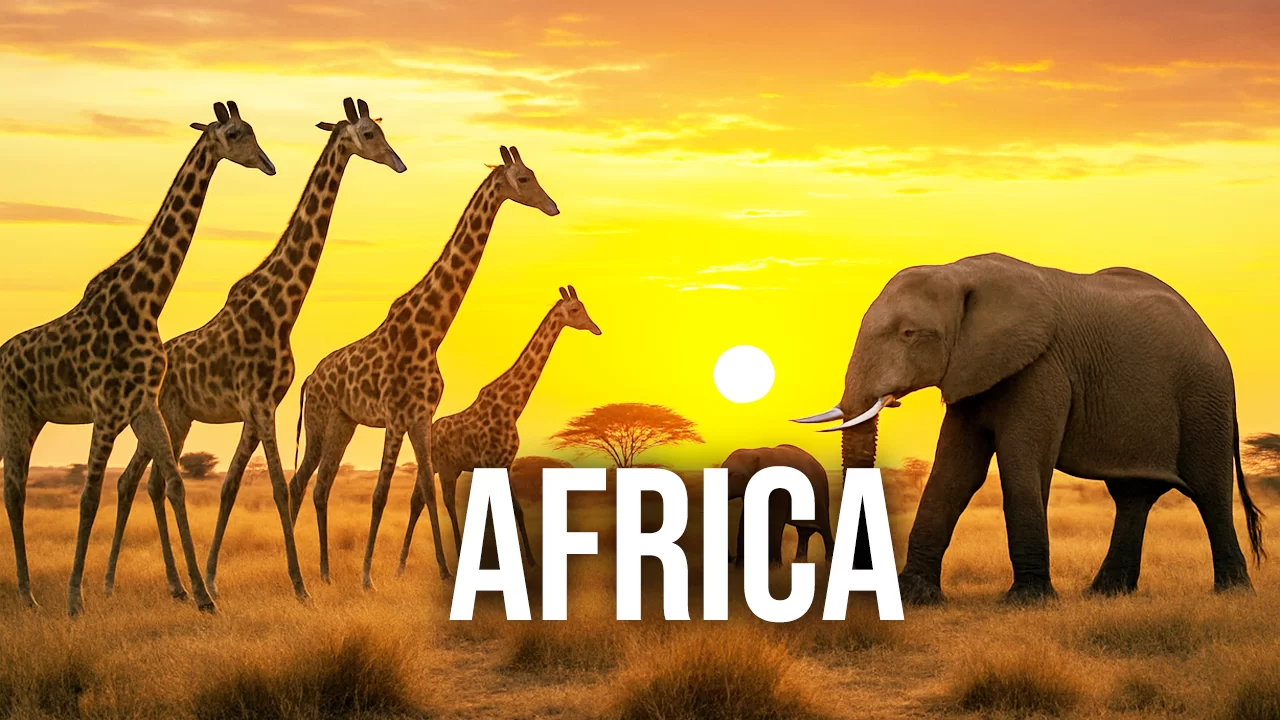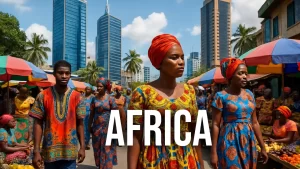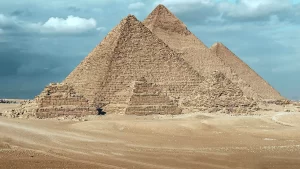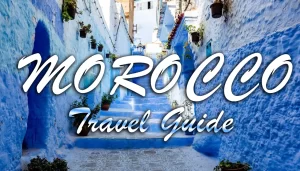Africa’s Leading Nations 2025

Africa’s Most Popular Countries in 2025
The African continent, admired by everyone from 7 to 70 on documentary channels, has recently experienced significant tourism growth. It has become a popular destination for holidaymakers and travelers.
The world’s second largest continent, Africa, is a captivating tapestry of ancient civilizations, breathtaking landscapes, and vibrant cultures. Spanning 30 million square kilometers and home to 54 sovereign nations, Africa offers an unparalleled depth of experience, from the pyramids of Egypt to the Serengeti savannas, from the spice markets of Morocco to the futuristic cities of South Africa.
This diverse continent offers a unique experience for every traveler. Whether you’re a history buff, an adventurer, or someone seeking new culinary experiences, Africa is a continent unlike any other.
- Geography and Natural Wonders
- Economic Landscape: A Diverse Economy
- Egypt: The Cradle of Civilization
- Historical & Economic Significance
- Must-Visit Historical & Modern Attractions
- Cuisine: A Blend of Ancient & Modern Flavors
- Popular Desserts and Drinks
- Kenya: The Safari Capital of the World
- Economy & tourism
With its rich cultural heritage, magnificent natural wonders, and diverse ecosystems, Africa is a land brimming with vibrant colors, rich traditions, and incredible opportunities for exploration. From the iconic Nile River in Egypt to the sunny beaches of Mauritius, there are endless places to explore, flavors to savor, and people to meet. This comprehensive guide will delve into Africa’s cultural, historical, and geographical features, focusing on the most popular countries, their economies, cuisines, traditions, and much more.
Geography and Natural Wonders
Africa’s diverse geography includes everything from vast deserts and lush rainforests to sprawling savannas and towering mountains. It is a continent that holds the largest hot desert in the world, the Sahara, and the lush tropical forests of the Congo Basin, which are home to some of the world’s most unique and endangered species. From the high-altitude peaks of Mount Kilimanjaro in Tanzania to the dry expanse of Namibia’s desert landscapes, Africa offers a wide range of stunning natural wonders.
One of the continent’s most famous natural landmarks is the Victoria Falls, located on the border of Zambia and Zimbabwe. This UNESCO World Heritage Site is one of the largest and most famous waterfalls in the world, offering awe-inspiring views and thrilling activities such as white-water rafting and bungee jumping. The Serengeti National Park, home to the Great Migration, and Kruger National Park, offering opportunities to see Africa’s Big Five, are also essential highlights for any nature enthusiast.
Africa’s coastal regions also offer pristine beaches and crystal-clear waters. The Seychelles, Mauritius, and Zanzibar are perfect destinations for beach lovers and those looking to explore Africa’s rich marine life. The continent also holds a treasure trove of islands and archipelagos, each offering a unique experience, from the volcanic islands of the Comoros to the beautiful beaches of Cape Verde.
Economic Landscape: A Diverse Economy
Africa’s economy is as diverse as its geography. The continent is home to some of the world’s largest and most significant industries. Agriculture remains the backbone of many African economies, but the rise of industries such as mining, oil extraction, and manufacturing has greatly contributed to the growth of Africa’s economy. South Africa is one of the most industrialized nations in Africa, with its economy driven by mining, manufacturing, and services. Egypt’s economy is heavily reliant on tourism, with iconic landmarks like the Pyramids of Giza attracting millions of visitors each year. Morocco, known for its strategic location, thrives on mining, agriculture, and textiles.
Oil-rich nations such as Nigeria and Angola also play a central role in the global energy market. At the same time, African economies like Kenya and Rwanda are quickly developing sectors such as technology, finance, and service industries. Kenya, for instance, has emerged as a leader in mobile technology, with innovations such as M-Pesa transforming the way people conduct financial transactions.
Agricultural exports like coffee, cocoa, and tea are crucial for many African nations. Kenya, Ethiopia, and Uganda are among the largest producers of coffee, while Côte d’Ivoire and Ghana are major producers of cocoa. The continent is also the world’s top exporter of certain minerals, such as gold, diamonds, and platinum.

Egypt: The Cradle of Civilization
Historical & Economic Significance
Egypt, with its rich history stretching back over 5,000 years, is one of the world’s oldest civilizations. Egypt is known for its monumental contributions to the fields of mathematics, architecture, and medicine. As the site of the ancient Egyptian civilization, Egypt has produced iconic monuments like the Pyramids of Giza and the Great Sphinx, which have fascinated historians and travelers alike for millennia.
Economically, Egypt is known for its strategic location. The Suez Canal, one of the busiest waterways in the world, connects the Mediterranean Sea to the Red Sea, making Egypt an essential trade hub. Additionally, Egypt’s economy is also bolstered by agriculture, which is highly dependent on the Nile River’s fertile floodplains.
Must-Visit Historical & Modern Attractions
The Great Pyramids of Giza:
The pyramids are one of the most famous tourist attractions in the world. The Great Pyramid of Giza is the largest and oldest of the three pyramids, built during the reign of Pharaoh Khufu. These monumental structures are a testament to the ingenuity and skill of ancient Egyptian architects and workers.
The Valley of the Kings:
Located in Luxor, this burial site contains the tombs of many pharaohs, including the famous tomb of King Tutankhamun. The elaborate tombs, filled with treasures and intricate artwork, provide insight into the religious and cultural practices of ancient Egypt.
Cairo Museum:
This museum is home to over 120,000 artifacts, including the treasures of Tutankhamun, ancient mummies, and countless statues and carvings from Egypt’s long history.
Cuisine: A Blend of Ancient & Modern Flavors
Egyptian cuisine has been shaped by centuries of diverse influences, including Ottoman, Mediterranean, and Middle Eastern cultures. The flavors are rich and varied, with dishes that use simple ingredients but are packed with spices.
Koshari:
This dish is considered Egypt’s national dish and consists of a mix of lentils, rice, pasta, and chickpeas, all topped with crispy fried onions and a tangy tomato sauce.
Molokhia:
A hearty stew made from jute leaves, typically served with rice or bread. Molokhia is a traditional dish that has been eaten since the time of the Pharaohs.
Feteer Meshaltet:
Known as Egyptian “pizza,” this flaky pastry is often filled with honey or cheese, making it a popular breakfast or snack.
Popular Desserts and Drinks
Basbousa:
A semolina cake soaked in rosewater syrup, often topped with coconut flakes or almonds.
Sahlab:
A warm, comforting drink made with orchid root, milk, and cinnamon. This creamy beverage is typically served during colder months.
creamy beverage is typically served during colder months.
- South Africa: The Rainbow Nation
Economic Powerhouse of Africa
South Africa is a key player in Africa’s economy, with a diverse and industrialized base. Its mining industry is world-renowned, with the country being one of the largest producers of gold, platinum, and diamonds. The country’s agriculture and tourism sectors also contribute significantly to its GDP, with Cape Town becoming a major international tourist destination.
Top Destinations: Wildlife, Beaches & History
Kruger National Park: Known for its vast wildlife and incredible safari opportunities, Kruger is a must-visit destination for any nature lover. Visitors can explore the park on a guided safari or self-drive through its extensive network of roads. A stay at the park gives you the chance to spot the Big Five, and its ecosystems are some of the richest in the world.
Table Mountain: Towering over Cape Town, Table Mountain offers stunning views of the city and the surrounding coastline. It’s a UNESCO World Heritage site and is home to diverse flora and fauna, many of which are endemic to the region.
Robben Island: This island was the site of the infamous prison where Nelson Mandela was held for 18 years. Today, Robben Island is a museum and an important symbol of South Africa’s fight for freedom. Guided tours are led by former prisoners, providing firsthand insight into the country’s apartheid history.
Cuisine: A Fusion of Indigenous & Colonial Flavors
South African cuisine reflects the country’s diverse cultural heritage. Dishes are often influenced by indigenous African, Dutch, and Indian traditions.
Braai: A South African barbecue, often featuring boerewors (sausage) and sosaties (kebabs), cooked over an open flame. This is a social event, often enjoyed with friends and family.
Bunny Chow: A unique South African dish made by hollowing out a loaf of bread and filling it with curry. Originally from Durban, this dish has become a national favorite.
Bobotie: A spiced minced meat dish, topped with a custard-like layer. It’s a delicious combination of savory and sweet, often served with yellow rice.
Desserts & Drinks
Malva Pudding: A sticky sponge cake made from apricot jam, often served with custard or ice cream.
Rooibos Tea: A caffeine-free herbal tea that is a South African specialty. It is known for its soothing properties and is a staple of daily life in the country.
Kenya: The Safari Capital of the World

Economy & tourism
Kenya’s economy is largely based on agriculture, including tea and flower exports. The country is also a popular destination for wildlife tourism, with the Maasai Mara attracting hundreds of thousands of visitors annually.
Must-See Natural & Cultural Sites
Maasai Mara: Home to the Great Migration, this wildlife reserve offers one of the best safari experiences in the world. Visitors can witness the migration of over a million wildebeest and zebras, making it one of the most spectacular natural events.
Amboseli National Park: Known for its large elephant herds and stunning views of Mount Kilimanjaro, Amboseli offers some of the best opportunities for wildlife photography.
Lamu Old Town: A UNESCO World Heritage site, Lamu is a historic Swahili settlement with narrow streets and beautiful beaches. It offers a unique glimpse into Kenya’s coastal culture.
Cuisine: Hearty & Flavorful
Kenyan cuisine is known for its hearty flavors and use of local ingredients. Maize, beans, and rice are staples, and the dishes are often accompanied by vegetables and stews.
Nyama Choma: A popular dish of grilled meat, typically goat or beef, served with vegetables and Ugali.
Ugali: A dense maize porridge, often eaten with stews or vegetables, making it a staple of Kenyan meals.
Sukuma Wiki: Collard greens sautéed with onions and tomatoes.
Sweet Treats
Mandazi: Fried doughnut-like pastries flavored with cardamom.
Mango Lassi: A refreshing yogurt-based drink often served with meals.
- Morocco: Where Africa Meets the Arab World
Economic & Cultural Blend
Morocco is a crossroads of cultures, blending Arab, Berber, and European influences. Its economy is bolstered by agriculture, mining, and textiles. tourism plays a significant role, with travelers flocking to Morocco’s iconic cities and the Sahara Desert.
Top Destinations
Marrakech: Known for its vibrant souks, palaces, and gardens, Marrakech is a city of contrasts, offering a blend of tradition and modernity. The Jemaa el-Fnaa square is a bustling center of activity, filled with street performers, food vendors, and market stalls.
Chefchaouen: Known as the “Blue City,” Chefchaouen is famous for its blue-painted buildings and mountainous scenery. It’s a photographer’s paradise.
Sahara Desert: A must-visit for those seeking adventure, camel treks across the Erg Chebbi dunes offer unforgettable views and a chance to experience the beauty of the desert.
Cuisine: A Spice-Lover’s Paradise
Moroccan cuisine is renowned for its use of aromatic spices and unique flavor combinations.
Tagine: A slow-cooked stew made with lamb, chicken, or vegetables, often accompanied by dried fruits like apricots or raisins.
Harira: A rich soup made with tomatoes, lentils, and chickpeas, often eaten to break the fast during Ramadan.
Pastilla: A savory-sweet pastry made with pigeon or chicken, cinnamon, and almonds.
Desserts & Mint Tea Rituals
Baklava: Layers of filo dough filled with nuts and honey.
Mint Tea: Served ceremoniously, Moroccan mint tea is a symbol of hospitality and a staple of daily life.


